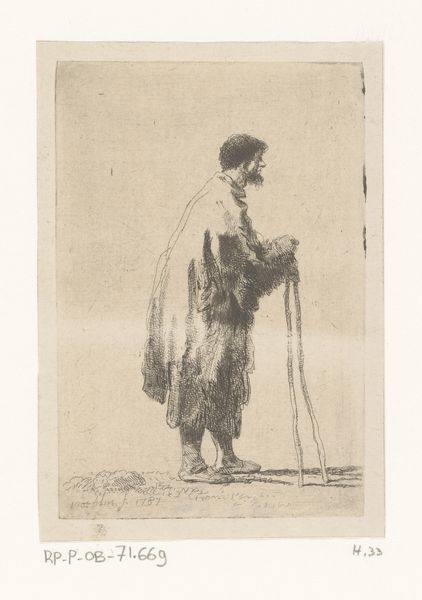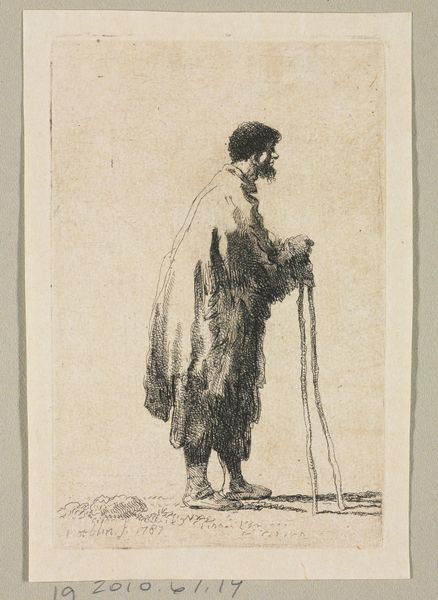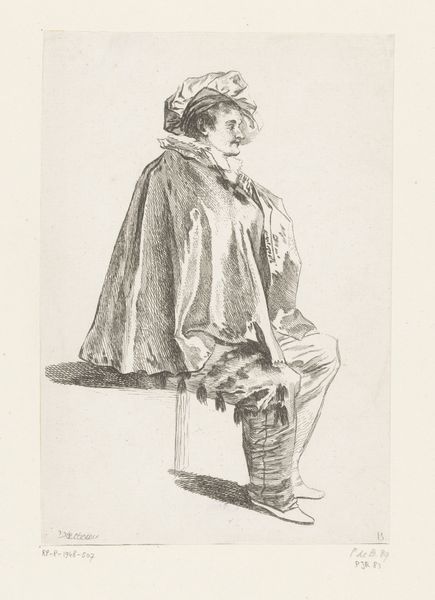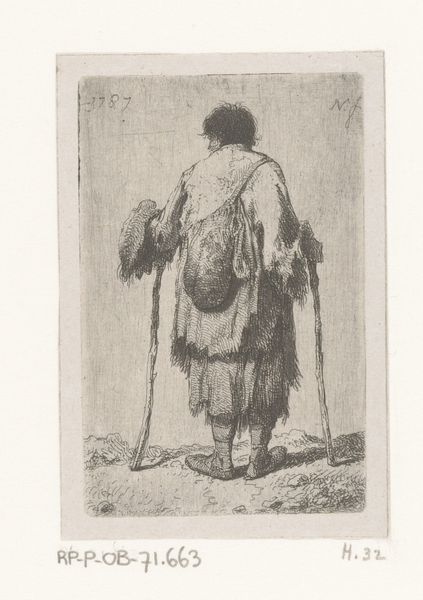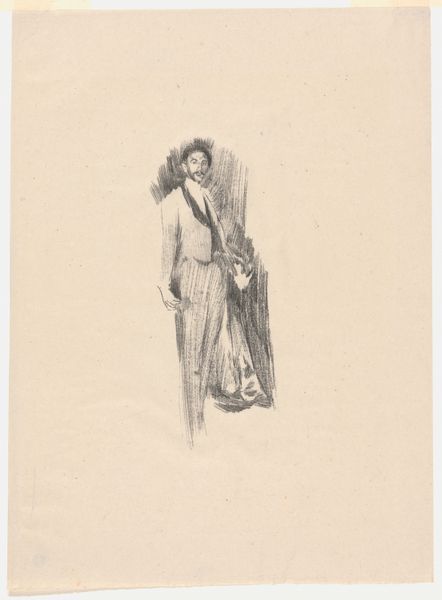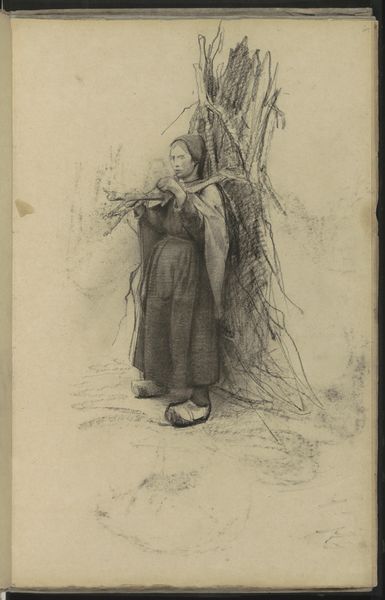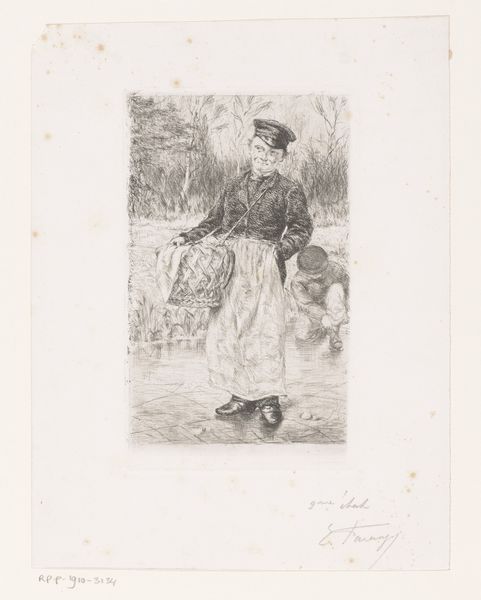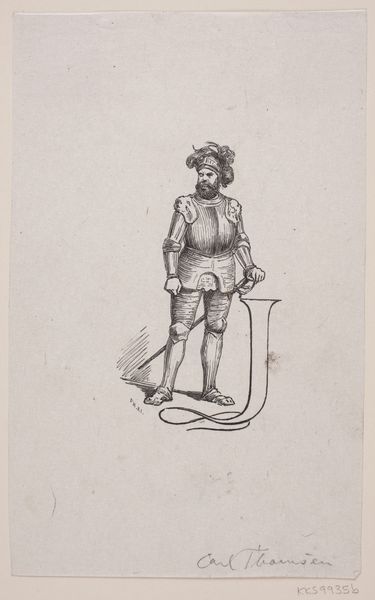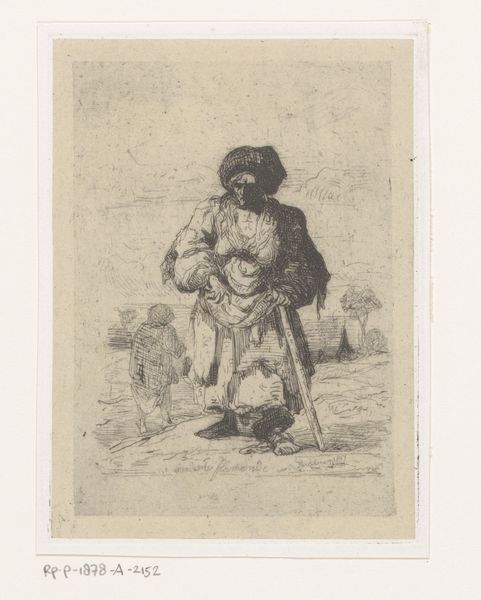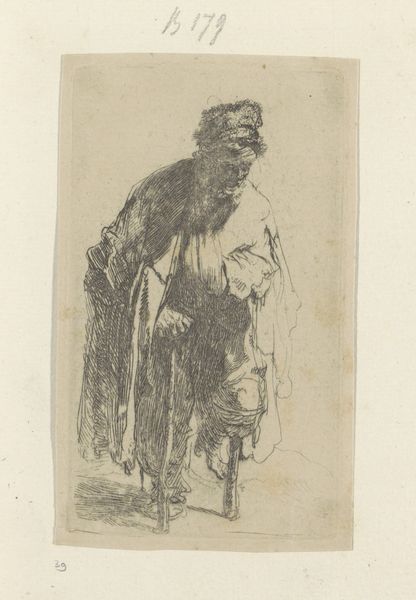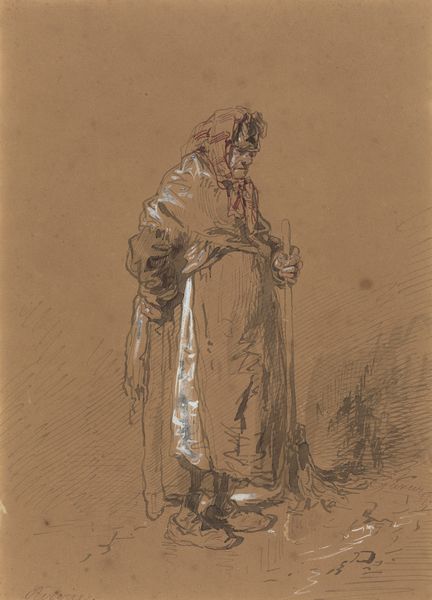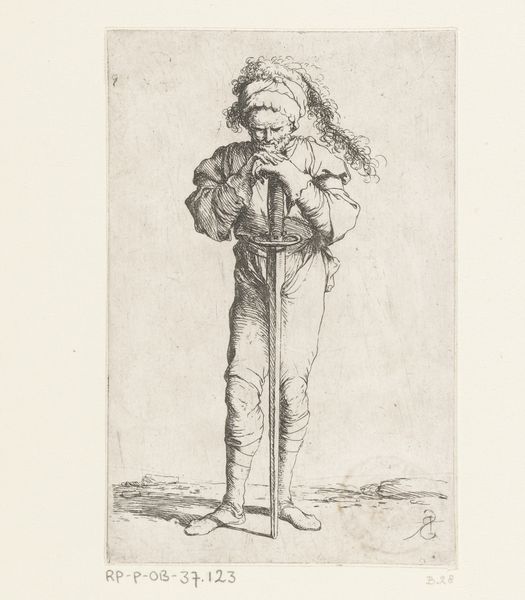
Dimensions: 4 1/8 x 2 11/16 in. (10.4 x 6.9 cm) (image)4 5/8 x 3 1/8 in. (11.8 x 8 cm) (sheet)
Copyright: Public Domain
Jean-Pierre Norblin de la Gourdaine etched this image of a beggar, capturing a figure worn by time and hardship. The most striking symbol is the walking stick, an emblem of support and guidance, but also of frailty and reliance. Consider the recurrence of the walking stick throughout art history, from ancient depictions of travelers and pilgrims to allegorical figures representing old age. One cannot help but think of depictions of the Wandering Jew, condemned to eternal pilgrimage, forever reliant on his staff. The beggar's posture, bent and leaning, evokes a sense of resignation and endurance, a visual echo of the emotional weight carried through generations. The image taps into a collective memory of human suffering, engaging us on a subconscious level. We can feel a powerful reminder of shared mortality. The symbol of the walking stick evolves, adapting to new cultural landscapes, yet its essence remains—a testament to the enduring human need for support and direction on life’s journey.
Comments
minneapolisinstituteofart almost 2 years ago
⋮
Jean-Pierre Norblin de la Gourdaine was a French painter and printmaker active in Poland in the late 18th century. Norblin's charming miniature etchings, representing mostly male heads, street sellers, and vagabonds, reflect both in subject and technique the profound influence of Rembrandt's prints. Norblin was also drawn to Polish subjects, capturing the unfamiliar, exotic world around him in his depictions of men with colossal fur hats and curled moustaches, Cossacks, and Polish historical figures.
Join the conversation
Join millions of artists and users on Artera today and experience the ultimate creative platform.
